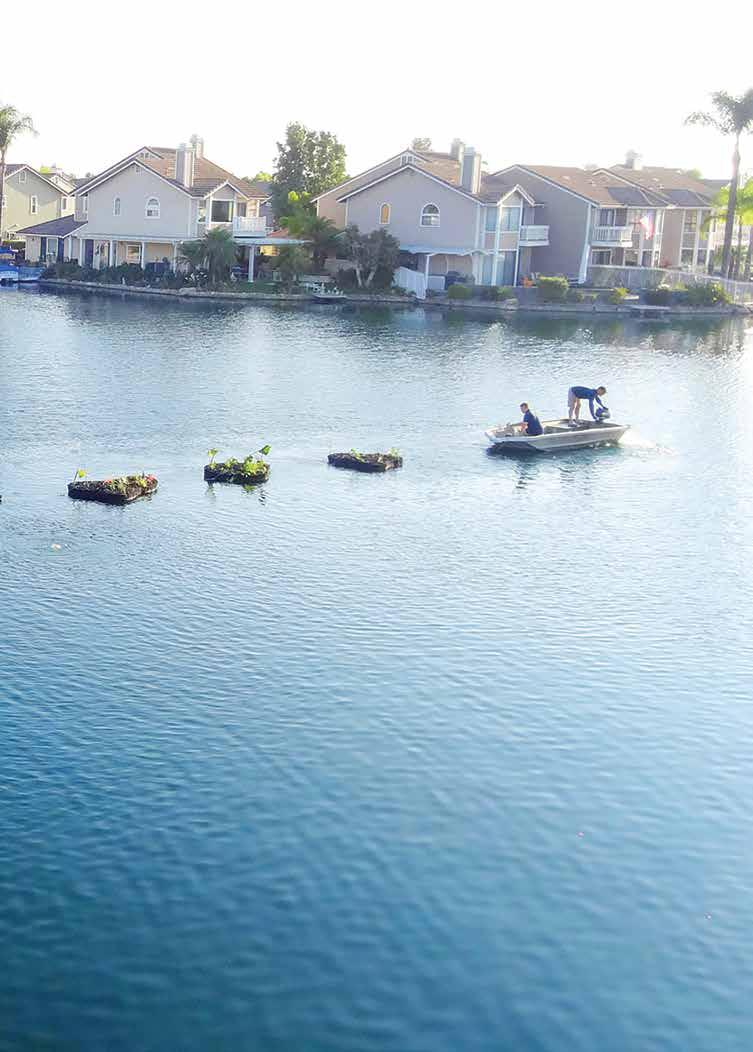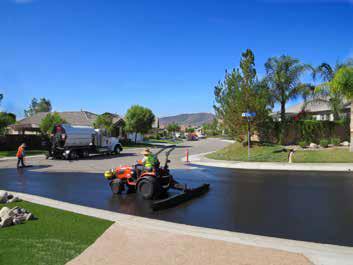
7 minute read
From the Roundtable
from the roundtable A MESSAGE FROM THE BOARD
Over the last few years, much has been written about the inventions that have changed lives, from items such as the wheel, to concrete, to automobiles, to electricity, to the most recent edition to these lists—the smartphone. As an early baby boomer, I remember the shoebox cellphone, then the flip phone, and now this smartphone gadget that may have 50 or more apps that allow me to access information from literally around the world.

CACM has certainly been a part of new world technologies. From our CACM website to our Facebook, Instagram and Twitter social media presence, we are touching thousands in the CID industry every day. Gone are the snail mail event reminders; now it’s instant and timely reminders on our smartphone and email.
Even CACM board directors over the years have witnessed changes to how we conduct board business. Paper board packets are a thing of the past. Now directors access their board packet during the meeting with a tablet or laptop. Oh, and by the way, they access these digital files through our CACM website.


And then there are our Industry Partners who amaze us with new software that allow a compliance photo to be taken onsite and have the compliance letter and photo ready to be mailed before the manager returns to the office. These same Industry Partners also create software that allow our board directors 24-hour access to their association’s financial information.
This is an exciting time to be a manager or vendor in our CID industry. With all the innovations we have experienced in the last 10 years, we can only wonder—what’s ahead for us in the next 10 years?
Thank you for your service to the CID industry.
On behalf of the CACM Board, Phyllis Harkins, CAMEx, CCAM-LS.AA, Board Chair

By Lynette Bertrand DEAD IN THE WATER
Operations manager at East Lake Village Community Association tackles dead fish problem with floating islands. Solution becomes model for others.

When dozens of fish began floating at the resort-style lake at the East Lake Village Community Association in Yorba Linda, Jeff Leinen knew something was wrong. But it would take him a year and a half of research, testing, and talking to community managers and biologists across the country to figure out what was killing them.

Leinen, CCAM, who majored in graphic design in college, had no idea that his job heading up this community of 2,200 homes and keeping its lake healthy would eventually mean putting on a scientist’s hat. Not only was the stench of dead fish prominent and residents who fished upset about the loss of their catch, but the midge fly population got out of control. Residents couldn’t go in their backyard to barbecue without the flies accosting them.
“That’s when we realized, we have to have fish. It’s all part of the food chain,” Leinen said.
First, Leinen had to figure out what was killing the fish, then he had to find out how to tackle it. He began sending some of the dead fish to labs to get tested and find out why they were dying. The fish couldn’t be dead for long for the testing to work, so Leinen had to capture the fish shortly after they died and pack and ship them next day to a lab in San Bernardino for necropsy reports.
“Nothing showed any reason why the fish were dying,” Leinen recalled. “We were scratching our heads.”
Leinen began reaching out to other homeowners associations with lakes to ask if they had experienced anything similar or if they had any suggestions of where he could look for answers. An association in Arizona responded with a potential culprit: golden algae, also known as prymnesium parvum. Communities in Arizona and Texas were knowledgeable about this algae since they had been dealing with it since the 1980s. However, its presence at the time was non-existent in California.
Leinen began researching online, but couldn’t find much information on golden algae. “When we got it, we didn’t know of any body of water in California that had it. I spoke with the department of fish and game for over an hour. They said, ’You’ve done everything you could ever do.’”
However, Leinen continued in his quest. He researched some more online. He pulled a microscope East Lake Village had in its boathouse, and examined water droplets. He found that what was in the water was similar to what he had found on his internet searches for golden algae.
Still, he needed scientific validation to start to figure out what to do about it. There were no labs in California that tested water for this
organism. A Utah lab directed him to a lab in Florida and instructed him on how to pack a sample and overnight it there.
Shortly after he sent it, Leinen received a call informing him that the sample had tested positive for prymnesium parvum. “We finally figured out what we had,” Leinen said. “We spent a year and a half trying to figure what was going on.”
One of the most challenging aspects was not having answers when residents approached him to ask why the fish were dying. And for over a year, Leinen had to say, “We don’t know.”
Leinen found the problem. The next hurdle was finding a solution.
“Once you have the algae, it doesn’t go anywhere. You will always have it,” he said. “But whether it releases toxins or not is the key. We were trying to figure out what the algae was thriving on.” Copper sulfate was a quick treatment that helped Leinen knock down the algae for a week or even a month at a time. But it wasn’t a long term answer. For a couple of years, Leinen used copper sulfate treatments to contain the toxins of the golden algae.


Through his research, Leinen found a company that offered floating islands with plants that they claimed could take the nutrients that the algae thrived on, essentially starving the algae of those nutrients. East Lake became a beta test to see if these floating islands could help remove the toxins for the long term. “At the beginning, it was a rough year,” Leined recalled. “The islands didn’t look great. Our homeowners weren’t happy with the looks. The hard part was that very few species of plants like full sun and complete root submersion in water. So our options were limited.”
It took Leinen some time to figure out which plants would work and were also aesthetically pleasing. Then he had to install fencing on them to keep water fowl off of them—trying different types for effectiveness as well as visual looks.
Leinen said the islands completely changed the lake. Fish began to thrive again and an unexpected benefit was that the water’s clarity improved as well within the first 12 months. In addition to the islands, the association installed new hydraulic diffusers to aerate the water.


The East Lake Village Community Association pulled from its lake cleaning reserve to cover the cost of the islands. While it wasn’t cheap, the solution was much more affordable than others. Three years after the islands went in, Leinen hasn’t had to treat the lake with copper.
“It’s safe to say it’s these islands,” he said, adding that now they’re mostly self-sustaining, although he’s often seen weeding and trimming them himself.
Leinen, who has worked for East Lake Village Community Association for 29 years, not only fixed the dead fish problem, he shared what he found with other associations throughout California, which took the same approach to combat golden algae in their lakes. To this day Leinen fields calls from different lake communities and reservoirs who seek out expertise on golden algae, of which he’s happy to share.

Honesty, Quality, Integrity. These guiding values have allowed AMS Paving to become the #1 choice for community associations in Southern California.
Serving all of Southern California since 1981!


Our Services:
• Asphalt Repair, Patching & Crack Seal • Asphalt Removal & Replacement • All types of Slurry Seals • ADA Compliance • Striping
Pave Protect


Perform






